On the previous page, we looked at what you and the child are doing with Key Words & The Steps. Here we consider other learning activities you can carry out as you go through your regular routine. But first, we look at what we know about when a young child is ready for dealing with print.
Age and Readiness For Print
Children are ready to translate their own speech into print earlier than most people realize. See what neurological studies at Harvard show us about brain development, age and readiness.
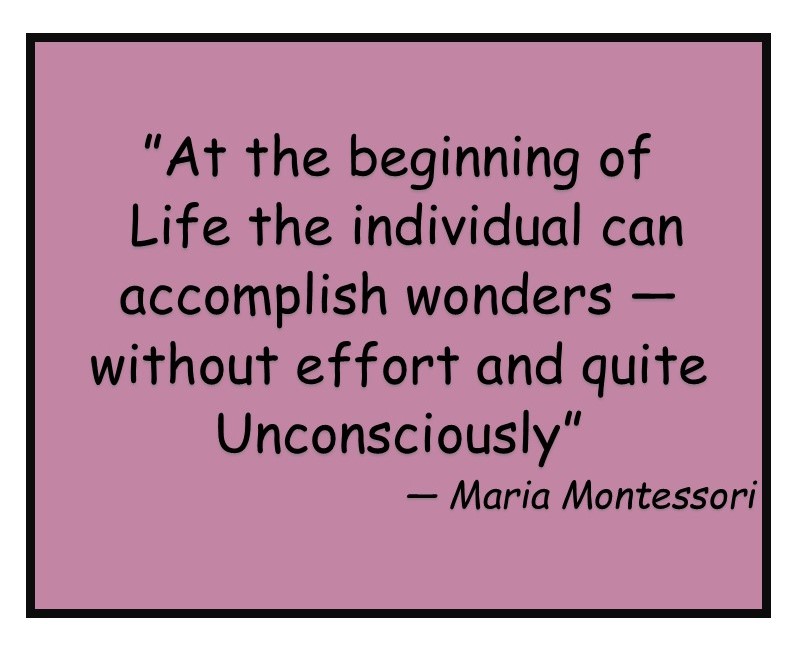
Findings confirm Montessori’s theory that as a child’s brain develops, they go through what she called “sensitive periods” for learning certain skills.
The results also suggest she was correct in thinking a child will have more difficulty learning a particular skill once their sensitive period for it passes.
So I recommend letting the child show you when they’re ready. A child who’s scribbling on their drawings, claiming they’ve written a word on it is obviously ready. But if it’s not obvious whether a child is ready, you can test for readiness.
Additional Activities
So far, I’ve described the mainstay of your regular homeschool or supplemental language arts curriculum. As far as developing a schedule, you could arrange the following in any order that works for you. To summarize —
- Key Words and The Steps: As described on the previous page.
- Phonemic Awareness: Again, see the page, Phonics With Key Words
- Reading with the child: They’re sitting beside you, helping to turn the pages of stories they love to hear over and over. They might be turning the pages, chanting the sentences from memory — even sometimes finding words that go with the pictures. They might be turning the pages, chanting the sentences from memory — even sometimes finding words that go with the pictures. (Pointing out any connections, though, is always done casually.) When older and already reading themselves, it’s still a good idea to read to them — children’s classics, such as Charlotte’s Web and Winnie The Poo.
- Singing, rhyming, dancing, clapping: This might be up with you both moving.
With that as your regular “school day” language arts routine, how might the rest of the day go?
“mini” lessons as you carry out your regular routine
Trust yourself — as an adult, you have a lot to pass on to your child. So when possible, involve them in some of your daily routine: cooking, baking, gardening, folding clothes, making up lists, feeding the pets, etc. Make it a habit to explain a concept or give them practice with a skill every day. Not everything every day, but something regularly. For instance,
Young child helping to fold clothes: Lets put the three blue towels in this stack, now the white ones over here — how many white ones do we have? Here, let’s count them out….
An older child when helping to plan meals for the weekly shopping: Here’s what I’m thinking of so far. Let’s look at this chart of the Food Pyramid – to see what we’re not getting enough of. Maybe we could add something to some of the meals…. Or there’s always the family budget and where groceries or buying something new fits into the budget….
See more examples here.
Allow Plenty of Unstructured Time for Play
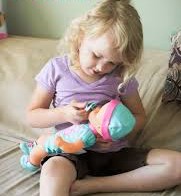
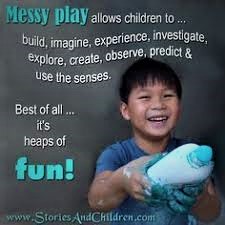 You’re not spending all that much time “teaching by doing,” you’re just involving them in things when you can.
You’re not spending all that much time “teaching by doing,” you’re just involving them in things when you can.
At other times, you’re in a hurry or just need a chance to do whatever you’re doing, on your own. This leaves them with lots of time to just be a child and do what children do to practice and learn — play.
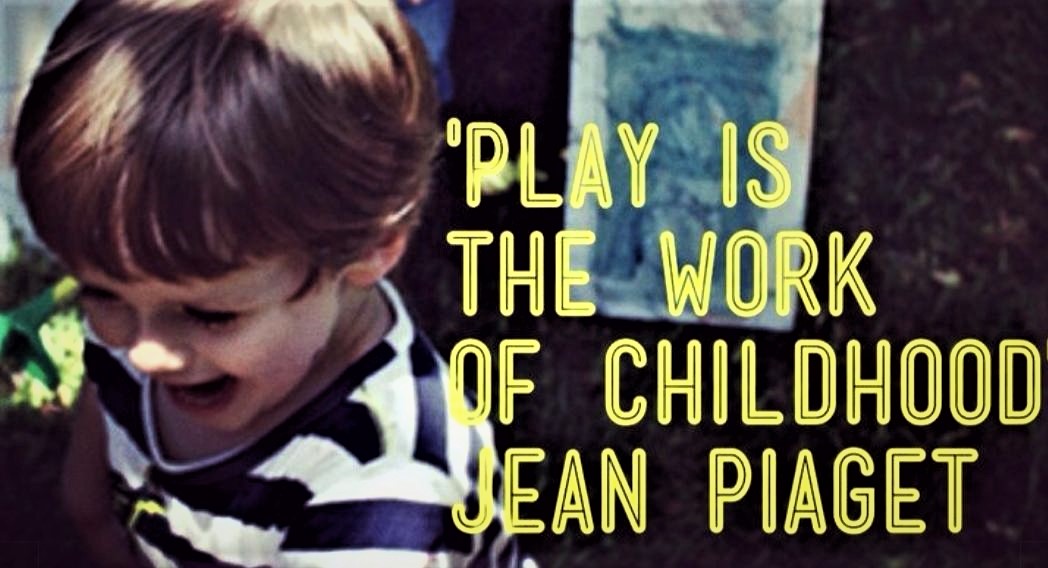 So they’ll be off off playing with their dolls, trucks, stuffed animals, construction set, etc. Or they’ll be singing, painting, coloring, dancing around, running, climbing — inside or out.
So they’ll be off off playing with their dolls, trucks, stuffed animals, construction set, etc. Or they’ll be singing, painting, coloring, dancing around, running, climbing — inside or out.
 (This section is purposefully brief, for all we need do is provide an interesting environment. And of course, be sure they’re safe.)
(This section is purposefully brief, for all we need do is provide an interesting environment. And of course, be sure they’re safe.)
Broader Issues and Links to Additional Pages
Broader Issues
For a discussion of issues beyond learning activities, see Broader Issues. These include the following topics: Setting long term goals, skill development as the young child’s primary goal, and providing “meaningful” content, critical features of this approach and it works so well.
Beyond those topics, I’ve included a few readings below, pared down from those in the larger website.
Additional Pages
Before you begin using Key Words and The Steps, I highly recommend you pause and take some quiet time to read the first two on the list: #1. Curriculum Nature’s Way, and #2. A Natural Approach To Learning. For you may need to make some decisions about how to adapt activities in ways that will work best for your own child. And knowing more about the thinking behind this approach will help you decide the best way to do that.
Following are links to other readings pared down from the larger website. Some I’ve already referenced in the discussions on this and previous pages. Others are new:
1. Curriculum Nature’s Way: When and how to focus on reading, writing, and higher level thinking skills vs developing predetermined content. Provides guidelines for developing literacy skills — based on a child’s heartfelt interests and the words they speak to describe them.
2. A Natural Approach To Learning: Why and How It Works: Rationale behind a natural approach — especially why it works so well for all children. Also shows what the child is accomplishing with Key Words.
3.Working Through The Steps With Key Words: More detail about how to work with Key Words and the follow-up activities known as The Steps. (Basic directions apply to both preschool and primary.)
4. Key Words With Preschoolers: How you might modify procedures for a younger child.
5.Phonics With Key Words: Strategies for incorporating a strong phonics component and other literacy skills into Key Words.
6. Projects — For All Ages: How to develop the process skills of investigation, analysis and reporting, through projects designed to capture the child’s interest and imagination. These range from simple activities for very young children — to more complex projects for older students.
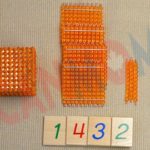 7. Individualized Math: This is the math companion piece to Key Words and The Steps. Shows how to develop a math program based on a table game children at all levels can play together. Spans learning to count, all the way through multiplication and column addition — all by playing a game children love.
7. Individualized Math: This is the math companion piece to Key Words and The Steps. Shows how to develop a math program based on a table game children at all levels can play together. Spans learning to count, all the way through multiplication and column addition — all by playing a game children love.
Additional Brief Topics
Reading Is Child’s Play: A printable, PDF version of a simple activity using Key Words while grocery shopping. Can also be used with other types of outings.
Chart For Letter Formation and Holding Pencils: Charts to guide letter formation. Plus a simple strategy for helping your 3 1/2 or 4 year old child to the correct way to hold a pencil. (Before that, we encourage the child to hold the pencil/crayon in any way that feels comfortable to them.)
Brainstorm for Special Topics: Strategy for developing ideas and vocabulary for writing about holidays, units of study, and other special topics.
Montessori 3 Part Lesson: Outline and a video showing the 3 Parts (also referred to as 3 “Periods”).
A Personal Message
join our facebook group!
For questions/comments and other strategies — and to share your own project examples, join the Facebook Group, Helping ALL Kids Write To Read.
My goals
This page began as part of a volunteer project I’ve undertaken in my retirement from teaching children and teachers. It’s my hope that together we can help all children succeed. For I know from my experience that struggle and failure are completely unnecessary. Yet there are many children out there still struggling and even failing to learn to read.
Failing to learn to read/write can have devastating effects, as the child who cannot succeed in school, drops out and takes other routes to “success.” The Literacy Project Foundation found that three out of five people in U.S. prisons can’t read and 85 percent of juvenile offenders have trouble reading.
Now during this pandemic, I also hope this page helps parents see how much they can do on their own. This, so that they’re comfortable they can keep their child going academically if in-person schooling is not a viable option.
I’ve also adapted these strategies for use over the phone. So if you have someone, perhaps in your family, who might like to join with you and your child with this, see this Phone/Texting strategy. And if you know a child who needs an extra boost, I hope you’ll find a way that you — or someone else you advise — can use the phone/texting strategy to help them succeed.
